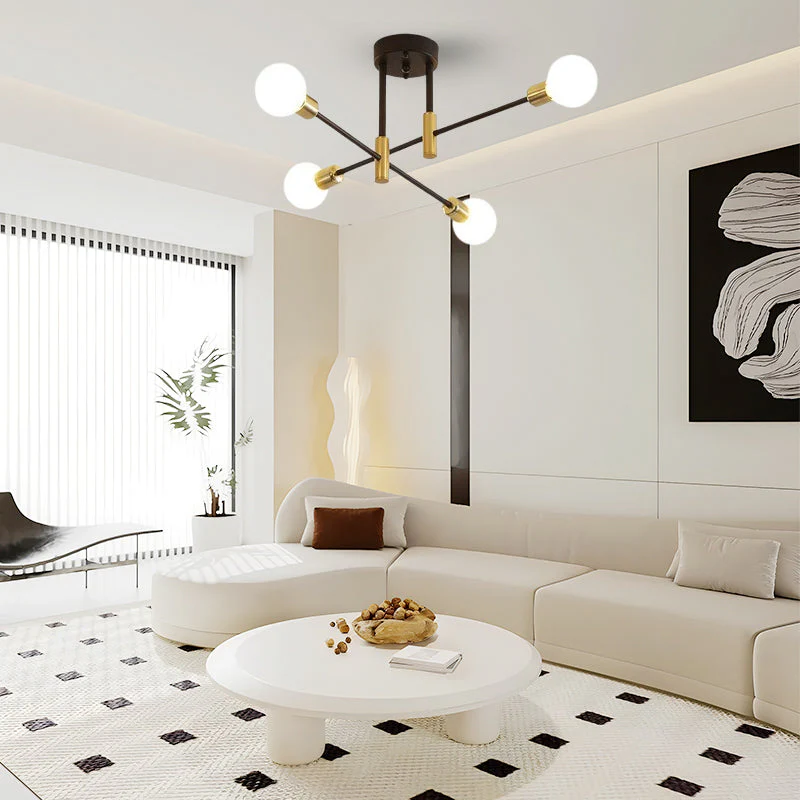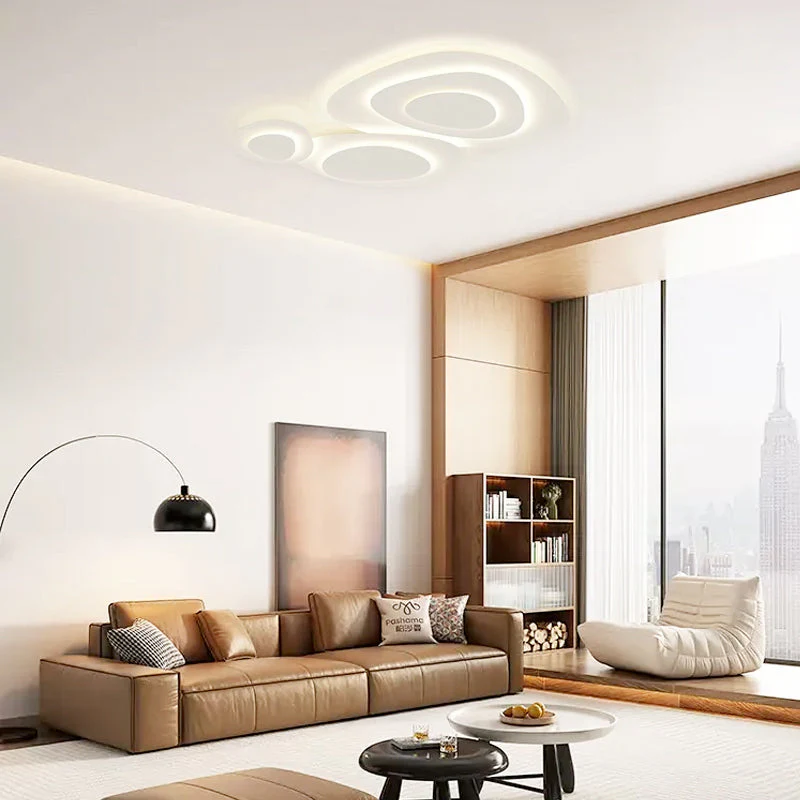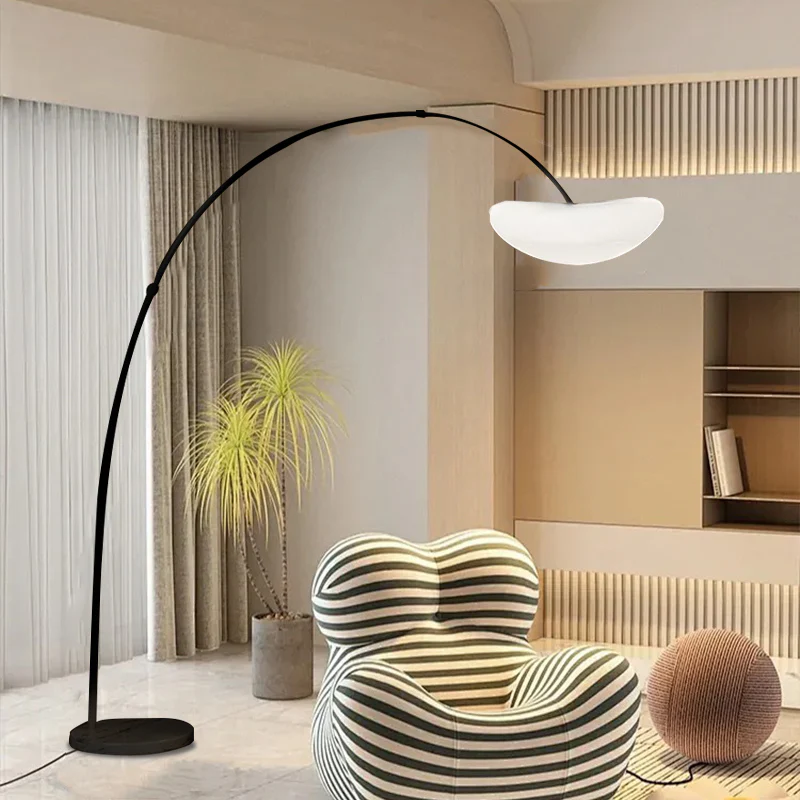Top Tips for Living Room Lighting in 2025

Lighting for living rooms in 2025 is more than just brightness. It transforms how you feel in your space. Good lighting for living rooms can set the mood, assist with tasks, and save energy. For instance, adjustable lights allow you to change the brightness according to your mood. Smart lights conserve power by dimming or turning off when not in use. Special lights can highlight your room’s best features, giving it an elegant appearance. By incorporating these ideas, you can create a stylish and eco-friendly living room.
Key Takeaways
Proper lighting changes your living room. It creates a mood, helps with tasks, and saves power.
Use thin curtains, mirrors, and light colours to boost sunlight. This makes the room cosy and welcoming.
Smart lights are amazing. They save power, can be controlled remotely, and fit any event.
Mix different lights like ambient, task, and accent ones. This mix improves both look and use.
Pick eco-friendly lights like LED and solar ones. They cut energy bills and help the planet.
Understanding Lighting for Living Rooms
Room Size and Layout Considerations
The size and shape of your living room affect its lighting needs. A small room can feel too harsh if overly bright. A big room may seem dull without enough light. Adjust the brightness to match the room's size and use. For example, a small reading corner needs focused light. A large living area looks better with layered lighting for depth.
Here’s a simple guide for brightness levels:
Activity |
|
|---|---|
Living rooms general |
50-150 |
Casual reading |
150 |
Study |
150-750 |
Think about where your furniture and key features are placed. Use lights to highlight areas like a coffee table or artwork. This makes your living room look stylish and practical.
Maximising Natural Light
Natural light is a free and eco-friendly way to brighten your room. Using daylight reduces the need for artificial lights and saves money. Studies show that using more daylight can cut artificial lighting by 16-20%, depending on your home’s location.
Try these tips to make the most of natural light:
Use thin curtains or blinds to let sunlight in while keeping privacy.
Place mirrors to bounce light around and brighten the room.
Pick light-coloured walls and furniture to reflect sunlight better.
These ideas save energy and make your room feel warm and welcoming. Natural light also adds a lively and dramatic touch to your space.
Defining the Room’s Purpose
Before planning your lighting, decide how you use your living room. Is it for relaxing, hosting friends, or working? Each activity needs different lighting. For example, soft lighting works well for relaxing evenings. A room used for many things needs task and accent lighting together.
Knowing about luminous flux helps you pick the right brightness. It ensures your lights are both useful and attractive. For instance, a dimmable ceiling light can brighten the room or adjust for specific tasks.
The best lighting mixes style with practicality. By matching your lighting to your room’s purpose, you create a space that looks great and works well.
Living Room Lighting Ideas for 2025

Smart Lighting Innovations
Smart lighting has changed how we light our homes. These new lights are easy to use, save energy, and can be personalised. For example, smart LED bulbs let you change brightness and colours using your voice or a phone app. You can set the right mood for any event with just a few clicks.
Smart lights also help lower energy bills. LEDs use up to 90% less power than old-style bulbs. They may cost more at first, but they last longer and use less energy, saving money over time. Features like motion sensors and timers make sure lights are only on when needed, cutting down on waste.
Here are some main advantages of smart lighting:
Save energy by adjusting brightness and timing.
Control lights easily with apps or voice commands.
Change colours to suit your mood or occasion.
If you want modern and efficient lighting, smart lights are a great choice.
Eco-Friendly and Sustainable Designs
In 2025, eco-friendly lighting is more important than ever. These designs aim to use less energy and protect the environment. Solar-powered lamps and LED lights are popular options for today’s living rooms.
Studies show that using sustainable lighting reduces the need for traditional energy. This not only lowers your bills but also helps the planet. Cleaner lighting options also improve air quality, which is better for your health.
Key Findings |
Impact on Energy Use |
|---|---|
People choose eco-friendly lights to help the environment. |
This reduces the use of traditional energy and saves power. |
Health concerns affect lighting choices. |
Cleaner lights improve health and cut energy waste. |
Solar lamp use depends on reliability. |
Reliable solar lamps can greatly lower energy use. |
By picking eco-friendly lights, you help the Earth and enjoy stylish, efficient lighting.

Eco-Friendly Light
Minimalist and Geometric Fixtures
Minimalism is still a big trend in home design, and lighting follows this style. Geometric light fixtures are a top choice for living rooms in 2025. These lights are simple yet artistic, making them perfect for modern homes.
Hexagon-shaped LED lights are especially popular. They come with app controls and voice features, letting you personalise your lighting easily. The decorative lighting market, worth USD 41.60 billion in 2024, is expected to grow by 2.9% yearly from 2025 to 2030. This shows more people want stylish and useful lighting.
Lighting Idea |
Popularity Level |
Benefits Description |
|---|---|---|
LED Hexagon Lighting |
High |
App and voice controls make customisation easy and fun. |
Decorative Lighting Market Growth |
Rising |
Growth of 2.9% shows increasing interest in home design and lighting. |
Minimalist and geometric lights add style and function to your living room. Their clean shapes and unique designs make them stand out in any space.

Minimalist Lamp
Layering Room Lighting
Layering lights makes your living room cosy and balanced. Using different light types together improves both style and usefulness.
Ambient Lighting for General Brightness
Ambient lighting is the main light in your living room. It keeps the room bright and welcoming. Ceiling lights like chandeliers or recessed lights work well for this.
To get the right brightness, follow these lux level tips:
Lighting Type |
|
|---|---|
Living rooms general |
50-150 |
Casual reading |
150 |
Study |
150-750 |
Ambient lighting is the base layer. It lets you add more lights for depth and style.
Task Lighting for Specific Needs
Task lighting helps with activities like reading or working. Desk lamps, floor lamps, and wall lights are great choices.
For example, a reading corner needs a bright light to avoid eye strain. A work desk in the living room also needs strong lighting for focus. Task lights make activities easier and match the room’s mood.
Accent Lighting for Style
Accent lighting adds beauty and highlights special features. It draws attention to things like art, furniture, or unique designs.
This lighting makes the room feel stylish and warm. LED strips, spotlights, and picture lights are popular options.
Use accent lights to show off paintings or sculptures.
Highlight walls or furniture for an elegant look.
Create a cosy and inviting atmosphere with these lights.
By mixing ambient, task, and accent lighting, your living room becomes both useful and beautiful.
Choosing Fixtures for Living Room Lighting
Eye-Catching Ceiling Lights
Ceiling lights can make your living room look amazing. Big or unique designs grab attention and add style. For example, pendant lights made of rattan or wicker give a modern, boho feel. Black ceiling lights work well in both classic and modern rooms.
Creative shapes like branching designs are now very trendy. These bold styles replace boring lights, making your ceiling stand out. A good pendant light not only brightens the room but also adds a special touch.
Wall Lights for Gentle Highlights
Wall lights are great for soft accents and showing off features. Dim wall sconces can highlight art or special details without being too bright. They also light up dark corners, making the room more interesting.
Using wall lights with other lights improves the room’s look. For example, pairing wall sconces with main lights creates a cosy feel. This way, your lighting is both useful and stylish.
Floor Lamps for Flexibility
Floor lamps are very useful and fit in any living room. Their simple designs match modern styles easily. Some have adjustable arms or shelves, making them perfect for reading or working.
Floor lamps are becoming more popular because they are practical. They are expected to grow in use by 5.4% each year until 2030. Whether you need light for reading or a stylish piece for your room, floor lamps are a great choice.
Table Lamps for Snug Spots
Table lamps are great for making snug spots in your living room. They give soft light that makes spaces feel cosy and welcoming. Use them for reading, relaxing, or enjoying a drink. A table lamp can make the mood better in any corner.
Pick table lamps that match your room’s size and style. Small lamps fit well on side tables, while bigger ones stand out on shelves. Choose designs that suit your décor. For example, ceramic bases with fabric shades look classic. Metal or glass lamps work well in modern rooms.
LED table lamps are smart choices for 2025. They use less power than old bulbs, saving money. These lamps last longer, so you won’t replace them often. Many LED lamps can dim, letting you change brightness for different activities.
Where you place your table lamps matters a lot. Put them near chairs to create a cosy glow. In reading areas, use lamps with focused beams to protect your eyes. You can also use them to highlight items like vases or photos. This adds charm and depth to your room.
Thoughtful use of table lamps can turn plain corners into snug, stylish spaces. They make your living room both useful and personal.
Energy Efficiency and Smart Room Lighting
Benefits of LED Lighting
LED lights have changed how we light our homes. They last longer and use much less energy. Switching to LED bulbs can cut your energy use a lot. For example, LED lights use up to 90% less energy than old incandescent bulbs. This makes them a smart choice for saving money and helping the environment.
More people are using LED lights because of their advantages. Look at this data:
Year |
Market Use (%) |
Energy Saved (%) |
Money Saved (USD) |
|---|---|---|---|
2013 |
3 |
- |
- |
2020 |
48 |
15 |
26 billion |
2030 |
84 |
40 |
- |
By 2030, LED lights could save 40% of energy. They are key to energy-saving lighting. Adding smart LED lights to your home lowers your carbon footprint. It also makes your living room look and feel better.
Smart Home Integration
Smart lighting can change how you control your lights. You can adjust brightness, colours, and even turn lights on or off remotely. For instance, smart lights can dim when there’s enough sunlight or turn on when someone enters the room.
Here’s why smart lighting is useful:
Save up to 90% on lighting energy with smart systems.
Control lights from your phone or tablet.
Make life easier by automating tasks like turning off lights.
Now, 91% of people own at least one smart home device. Smart LED lights make life simpler and keep your living room stylish and energy-efficient.
Cost Savings with Automation
Automated lighting can save you a lot of money. It cuts down on wasted energy and lowers your bills. For example, the Smith family saved 30% on energy by automating their lights. They also cut heating and cooling costs by 25% with smart thermostats, saving 40% overall.
Automation ensures lights are only on when needed. Smart LED lights with automation are both efficient and easy to use. By choosing these systems, you can have a living room that saves money and helps the planet.
Practical Tips for Living Room Lighting Installation
Professional Installation vs. DIY
Deciding between hiring a pro or doing it yourself depends on your skills and the difficulty of the setup. DIY might save money, but it can lead to uneven results. Poor installation may cause flickering lights or even dangerous wiring problems. Breakers might trip, and other electrical issues could arise.
Experts know how to do the job right. They make sure your lights work well and look great. Professionals check your space for problems and customise the setup to fit your living room. Here’s a simple comparison:
Aspect |
Professional Installation |
DIY Installation |
|---|---|---|
Installation Process |
Done by experts for the best results |
Depends on your skill, so results may vary |
Performance |
Ensures great looks and performance |
Mistakes can shorten light lifespan |
Site Assessment |
Includes expert checks for potential problems |
No expert checks, so risks are higher |
Long-term Results |
Fewer problems and better durability |
More chance of damage and future repairs |
DIY is fine for easy setups, but professionals ensure safety and a polished finish.
Best Fixture Placement
Placing lights correctly makes your living room bright and balanced. Start by spotting big furniture or beams that block light. Think about your ceiling height when picking fixtures. For example, recessed lights suit low ceilings, while pendant lights fit high ones.
Follow these steps for good placement:
Spot objects that block light.
Pick lights that match your ceiling height.
Arrange furniture to avoid shadows.
Make sure furniture doesn’t block light flow.
Match lighting to each area’s needs.
Use ambient, task, and accent lights together.
Planning placement well makes your room bright and practical.
Cleaning and Maintenance Tips
Clean and maintain your lights to keep them working well. Dust and dirt can make them dim and look bad. Regular cleaning stops this from happening.
Try these tips:
Wipe lights weekly with a soft cloth or duster.
Don’t use strong chemicals that harm finishes.
Check wires and connections often for safety.
Replace burnt-out bulbs quickly for steady lighting.
Taking care of your lights makes them last longer and keeps your room looking great.
Good lighting can make your living room both useful and stylish. Plan your lights carefully to create a cosy and practical space. Try new ideas like smart lighting and cool geometric designs to stay trendy.
💡 Tip: Use ambient, task, and accent lights together for balance.
First, think about your room’s layout and how you use it. Pick durable fixtures that suit your taste. Use smart lighting to save energy and make life easier. By following these tips, you can have a living room that looks great and works well.
FAQ
What lighting works best for a small living room?
Use different types of lights together. Combine ceiling lights for general brightness with floor lamps for tasks. Add small lights to highlight decorations. This makes the room feel bigger and more welcoming.
How can I save energy with living room lighting?
Switch to LED lights. They use less power and last longer. Smart lighting systems can control brightness and timing automatically. These changes save energy and cut your electricity costs.
Should I pick warm or cool lighting for my living room?
Warm lights are great for a cosy and calm feel. Cool lights are better for work areas. Choose dimmable lights to change the brightness for different activities.
How do I make artwork or special items stand out?
Use small spotlights or picture lights to focus on them. Place the lights to shine directly on the artwork or item. LED strips can also add soft light to shelves or unique designs.
Can I set up smart lighting by myself?
Yes, many smart lights are simple to install. Follow the instructions that come with them. For tricky setups, hire an expert to ensure safety and proper installation.

